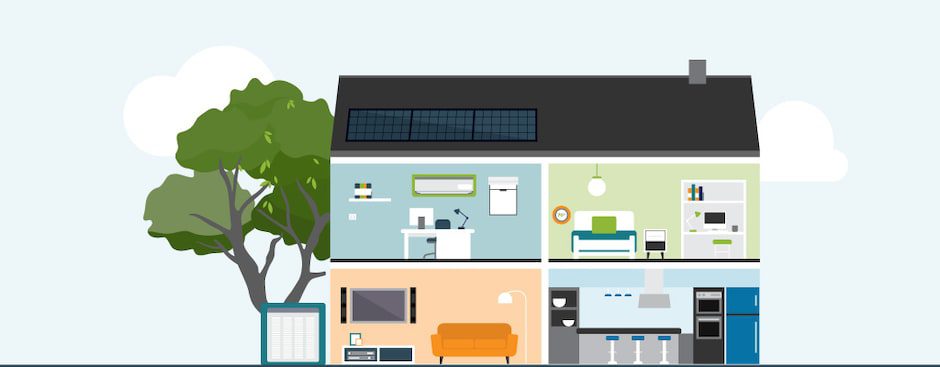The Role of Wireless Access Points in Smart Homes and IoT
As technology continues to advance, the concept of a smart home is becoming an increasingly common reality for many households. At the heart of this transformation lies the Internet of Things (IoT), a network of interconnected devices that communicate with each other to enhance convenience, efficiency, and safety in our daily lives. Central to the functioning of these smart devices is the role of wireless access points (WAPs), which provide the necessary connectivity to facilitate seamless communication between devices. Understanding the significance of WAPs in the context of smart homes and IoT is crucial for anyone looking to embrace this modern lifestyle.
Wireless access points serve as the bridge between smart devices and the internet, allowing them to transmit and receive data efficiently. In a smart home environment, WAPs enable various gadgets—from smart thermostats and lighting systems to security cameras and voice assistants—to connect to a single network. This connectivity not only streamlines control over the devices but also enhances their functionality through real-time updates and remote management capabilities. With a strong and reliable wireless network powered by WAPs, homeowners can enjoy the full benefits of IoT technology without the frustration of connectivity issues.
The growing trend of smart homes has driven consumers to seek advanced wireless solutions that can support numerous connected devices simultaneously. Given that many households may have dozens of smart devices in operation, the demand for robust and high-performance wireless access points has surged. These devices have evolved to meet homeowners’ needs, providing features that enhance performance, security, and ease of use. Consequently, it is essential to understand the critical role that WAPs play in realizing the potential of IoT and creating a truly smart home environment.
This article will explore the functions and benefits of wireless access points in smart homes and the IoT landscape. We will analyze how WAPs support device connectivity, enhance user experience, provide security measures, and facilitate the reliable operation of smart home technologies. By examining these aspects, homeowners and tech enthusiasts can gain valuable insights that help them maximize their use of wireless access points in their smart home implementations.
The Importance of Wireless Connectivity in Smart Homes
In today’s smart homes, connectivity is the cornerstone of functionality. A wireless access point provides the necessary infrastructure to ensure that all devices can communicate effectively with each other and with cloud services. Without a reliable wireless network, the entire purpose of a smart home becomes compromised, as devices rely on consistent communication to execute automations, share data, and allow user interaction. This continuous and seamless communication is vital for both performance and convenience.
Most homes today are equipped with multiple smart devices, and the demand for wireless connectivity only continues to grow. Traditional routers may struggle to support numerous simultaneous connections, leading to issues such as slow internet speeds or even disconnections. Here, wireless access points prove essential, as they can extend the range and capacity of a home network. By distributing the wireless load and providing stronger signals, WAPs ensure that devices remain connected, even in larger spaces or areas with potential obstructions like walls and furniture.
Moreover, as smart home technology evolves, so too does the requirement for bandwidth. Activities such as streaming high-definition video, conducting video calls, or engaging in online gaming can consume considerable amounts of data. When smart devices operate alongside these high-bandwidth applications, having a powerful wireless access point becomes indispensable. The advanced capabilities of modern WAPs allow households to enjoy a seamless online experience while maximizing the functionality of their interconnected smart devices.
Enhancing Smart Home Automation
Wireless access points play a pivotal role in enabling smart home automation. Automation relies on the ability of various devices to communicate and execute commands seamlessly. For example, a smart thermostat might need to adjust temperature settings based on input from smart sensors placed around the home. A reliable WAP ensures that data from these sensors is transmitted promptly to the thermostat, enabling it to optimize heating or cooling in real time. Without effective communication facilitated by WAPs, automation can falter, leading to reduced efficiency and functionality.
Furthermore, wireless access points support voice-activated assistants, which are increasingly common in smart homes. These assistants, such as Amazon Alexa or Google Assistant, rely on constant connectivity to function correctly. When a user issues a command, the voice assistant needs to relay that command to various devices, such as smart lights or locks. A robust WAP ensures that the assistant can communicate without delay, allowing for immediate responses and actions. The integration of voice control with a reliable wireless network elevates the overall user experience, making smart home management more intuitive.
In addition, WAPs facilitate the integration of diverse devices from multiple manufacturers, contributing to a more cohesive smart home ecosystem. For example, a smart security system that includes cameras, motion detectors, and alarms often consists of components from various brands. By leveraging wireless access points, homeowners can connect these devices to a single network, enabling centralized management and control through a unified interface. This not only simplifies user experience but also maximizes the efficiency of smart home systems by ensuring they operate in synchronization.
Security Considerations for Wireless Access Points
With the increasing number of connected devices in smart homes, security is a paramount concern for homeowners. Wireless access points, while providing essential connectivity, can also serve as potential gateways for unauthorized access if not adequately secured. It is crucial to implement strong security measures to protect the home network and the sensitive data transmitted between devices. WAPs need to support up-to-date security protocols, such as WPA3 encryption, to safeguard against hacking and data breaches.
Network segmentation is another security strategy enabled by WAPs. Homeowners can create separate networks for smart devices, ensuring that they do not compromise the security of personal computers and other sensitive devices connected to the main network. This segmentation adds an additional layer of protection that limits potential threats. By isolating IoT devices, network owners can prevent potential malware from spreading throughout their home network in the event of a security breach.
Moreover, regular firmware updates are crucial for maintaining the security of wireless access points. Many modern WAPs offer automatic updates to ensure they remain protected against the latest threats. Homeowners should always prioritize keeping their WAPs and connected devices updated. This proactive approach to security reinforces the integrity of the smart home ecosystem, ensuring that all devices can operate safely and effectively without risking exposure to vulnerabilities.
Future Trends in Wireless Access Points and Smart Homes
As the landscape of smart homes continues to evolve, the role of wireless access points will likely expand and adapt to new technological advancements. Innovations such as Wi-Fi 6 and beyond are beginning to take hold, offering significantly enhanced speeds and capacity, which will further streamline the performance of connected devices. This new technology is set to improve communication between devices, mitigating latency and improving overall responsiveness—key components of a truly smart home experience.
Additionally, the demand for a more extensive range of compatible smart devices will likely spur the development of WAPs equipped with advanced features. Future models may include built-in mesh networking capabilities, allowing them to work in conjunction with other access points to provide seamless coverage throughout larger homes. Mesh networking not only extends range but also increases reliability, creating a more resilient smart home infrastructure capable of catering to numerous devices and simultaneous connections.
As the concept of smart homes becomes more mainstream, the focus on energy efficiency and sustainability will also shape the development of wireless access points. Future WAPs may feature energy-saving functions, such as adaptive power management, which allows them to minimize energy consumption without compromising performance. These innovations will be essential for homeowners striving to create energy-efficient living spaces that leverage technology while being conscious of their environmental impact. The evolution of wireless access points will undoubtedly play a significant role in shaping the future of smart homes and the Internet of Things.
Conclusion
In summary, the significant role of wireless access points in smart homes and the broader IoT landscape cannot be overstated. As homes become increasingly equipped with smart devices, the demand for reliable wireless connectivity remains critical. Wireless access points serve as the backbone of these networks, providing the necessary infrastructure to facilitate seamless communication between devices, thereby enabling efficient automation and enhancing the overall user experience. The introduction of new technologies, such as Wi-Fi 6, will further augment the capabilities of WAPs, allowing them to support an expanding array of connected devices without compromising performance or reliability.
Furthermore, the security considerations associated with smart homes are equally important. With the proliferation of connected devices comes an increased risk of cyber threats, making it essential for homeowners to implement robust security measures. By ensuring that wireless access points are equipped with advanced security protocols, creating network segmentation, and keeping firmware updated, users can protect their homes from potential vulnerabilities. These proactive strategies reinforce the integrity of smart home networks and ensure secure, uninterrupted operation.
Looking forward, the future of wireless access points will likely align closely with the emerging demands of smart home technologies. Innovations aimed at enhancing performance, flexibility, and sustainability will pave the way for a more interconnected and efficient ecosystem. As homeowners embrace the conveniences offered by smart devices, understanding the vital role of wireless access points will empower them to make informed decisions and optimize their home networks. Ultimately, the combination of smart homes and IoT will continue to revolutionize daily living, and wireless access points remain a vital component in this transformative journey toward a more connected future.




